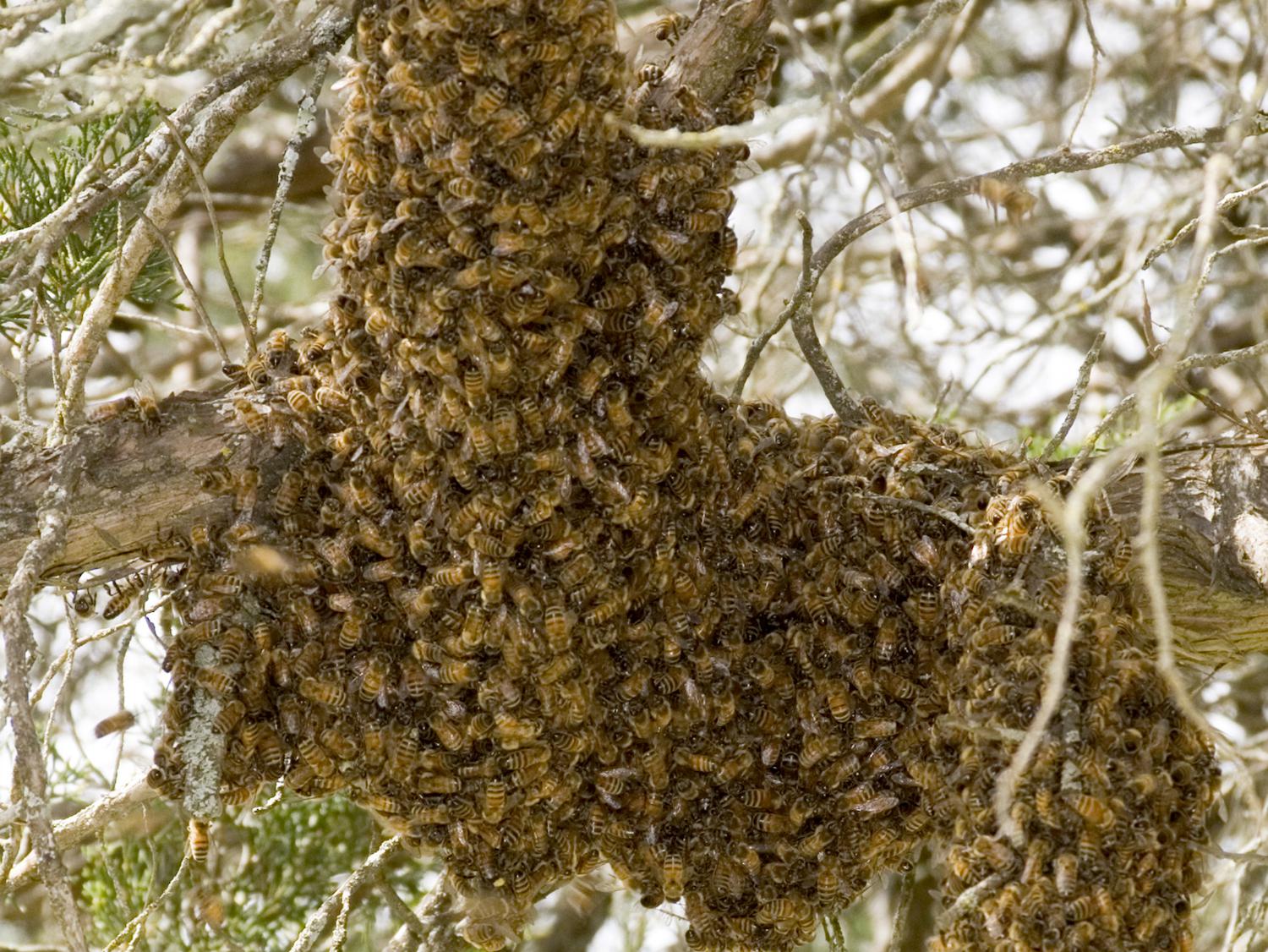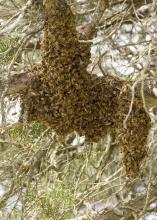Information Possibly Outdated
The information presented on this page was originally released on May 13, 2016. It may not be outdated, but please search our site for more current information. If you plan to quote or reference this information in a publication, please check with the Extension specialist or author before proceeding.
Warmer days bring honeybee swarms
RAYMOND, Miss -- This time of year is when swarms of honeybees settle in trees or shrubs as they leave their hives searching for larger places to live
Although the sight of several thousand swarming bees is frightening, homeowners should not become overly alarmed. The swarming activity is a normal event in the biology of honeybees. Without this activity, we would have no honeybees to pollinate our fruits and vegetables. Therefore, homeowners should be glad to see this event occurring.
It’s hard to believe that honeybees are not native to the Americas. They probably originated in tropical Africa and spread from southern Africa to northern Europe and west into India and China. Early colonists brought them to the Americas. Honeybees are now distributed worldwide.
The first bees appear in the fossil record in deposits dating about 40 million years ago in the Eocene period. At about 30 million years ago, they appear to have developed social behavior and were virtually identical to modern bees.
A typical small hive contains around 20,000 bees. These bees are divided into three types: queen, drone and worker. A new queen’s life often begins violently. After hatching, she fights to the death with any other hatched queens, destroys any unhatched queens and may destroy her mother. The queen then takes her mating flight, which always follows a pattern. The virgin queen flies to a congregation area where hundreds or thousands of unrelated drones await. The drones pursue the queen (hence the swarm) attempting to mate with her.
If you happen to encounter one of these swarms, it is best not to disturb it. Most of the time, the swarm is in flight. However, it will congregate on a branch or even on a building at times. After a relatively short period (rarely more than a day), the swarm will take flight again. Anyone who sprays a swarm with an insecticide is doing much more harm than good.
Once the swarm finds adequate space, you may not even notice the bees are around except when you are in the garden, enjoying the sound of their gentle hum as they search for nectar and pollinate the plants around us.
If you are concerned about a swarm near you, contact the local Extension office for information on area beekeepers who can come and remove it for you.
For more information on honeybee swarms, see MSU Extension Information Sheet 1662, “Spring Brings Honey Bees in Some Unwanted Places: Homes,” located at http://bit.ly/1OnDnMU.

Editor’s Note: Extension Outdoors is a column authored by several different experts in the Mississippi State University Extension Service.









